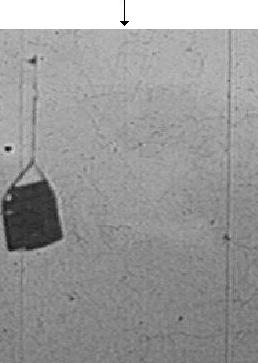Motion Picture Restoration
- Home /
- Research Highlights /
- Line Scratch Restoration /
- The model Black & White
The Model
by V. Bruni and D. Vitulano
- the degraded image signal is the zero-mean Radon Projection of the image along the column axis, called luminance cross-section
- the scratch profile on the cross-section is well-modelled by a damped sinusoid whose equation is:

- the scratch is an area of partially missing data: its destroying effect is almost complete in correspondence to the peak of the sinusoid and diminishes moving away from it, according to the coefficient kp; moreover the higher the amplitude of the scratch, the more evident is its destroying effect (measured by the coefficient gamma).
Thus the model is

where I is the degraded image signal and G the original image one
The Algorithm
- Image luminance cross-section computation
- Hierarchical representation on the cross-section (peaks sequence: maxima for white scratches, minima for the black ones)
- Width Selection: peaks which are mainlobe of sinusoids having sidelobes distance in the range [3,10] are selected,
- Height Selection: peaks having amplitude over the average of the heigth of the signal are selected;
- Weber's law (Energy) Selection: peaks having an energy value greater than the minimum one for a perceivable scratch (according to the Weber's law) are selected
- False alarms rejection: lines ending roughly on the image are rejected
Scratches Classification
-
Principal Scratches extending vertically on more than 95% of the image
-
not alone , having another scratch at distance of few pixels with sidelobes influencing each other;

- alone , viceversa.
- Secondary scratches: length up to 95% of image (They can be alone or not alone)
Experimental Results
The proposed algorithm- detects principal and secondary scratches because there are not thresholds on the length of the scratch; see the ones in the middle of the portion of the frame of STAR sequence;
 STAR sequence, portion of FRAME no.1
STAR sequence, portion of FRAME no.1
- detects slight scratches thanks to the Weber’s law, expecially if they are alone; see the one at column number 146 of the seventh frame of SITDOWN sequence;
 SITDOWN sequence, portion of FRAME no.7
SITDOWN sequence, portion of FRAME no.7
- has no limit on the number of scratches to be detected;
- employs a lower computing time: O(MN) for the cross-section computation and O(N) for the thresholding phases
Slides
(see V. Bruni, D. Vitulano, A Generalized Model for Scratch Detection, IEEE Trans. on Image Processing, Vol. 12, No. 11, November 2003)
Download Mfiles -
not alone , having another scratch at distance of few pixels with sidelobes influencing each other;
